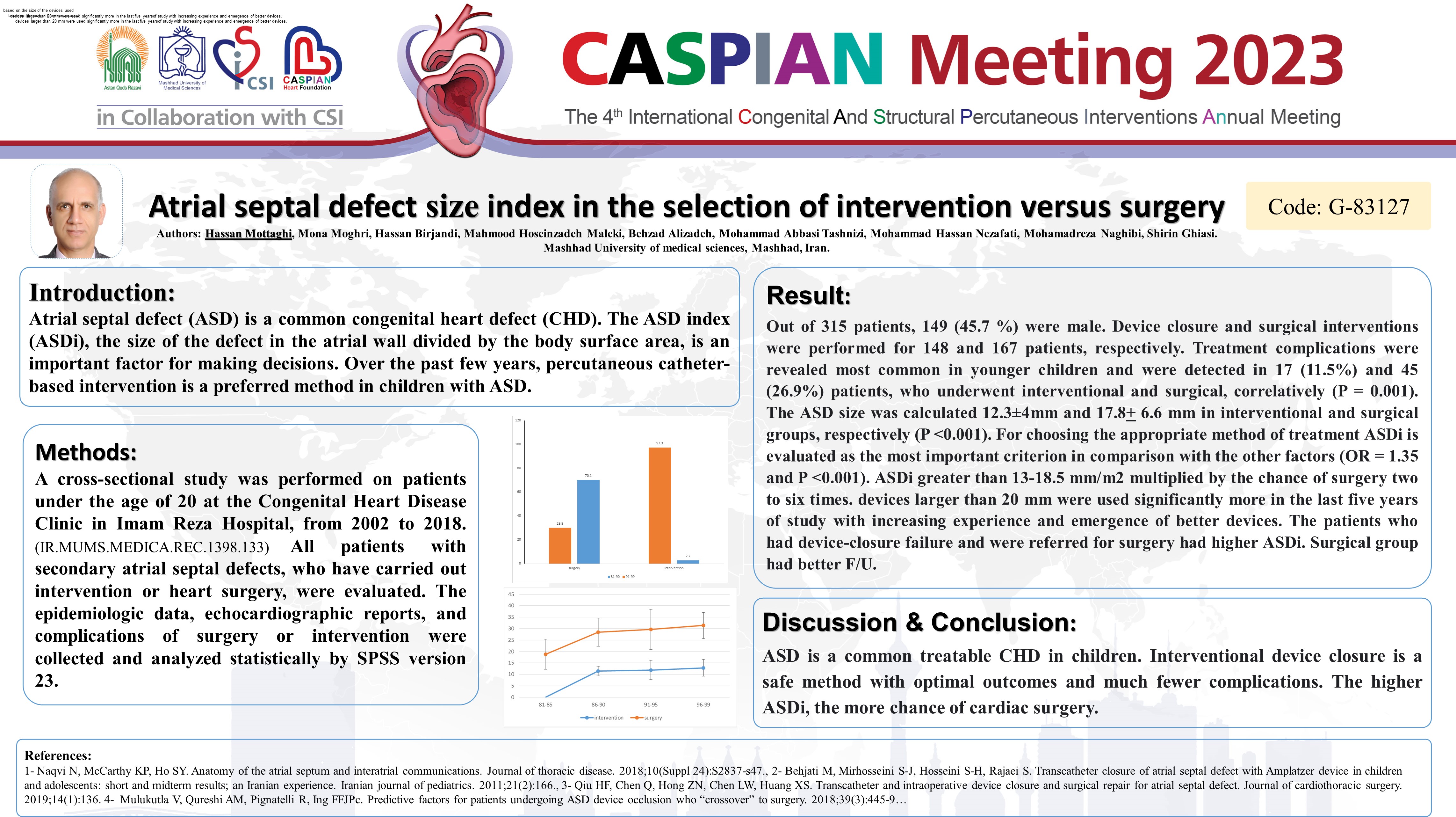Atrial septal defect size index in the selection of intervention versus surgery
Code: G-83127
Authors: Hassan Mottaghi Moghaddam Shahri © ℗, Mona Moghri, Hassan Birjandi, Mahmood Hoseinzadeh Maleki, Behzad Alizadeh, Mohammad Abbasi Tashnizi, Mohammadhassan Nezafati, Mohammadreza Naghibi, Shirin Ghiasi
Schedule: Not Scheduled!
Download: Download Poster
Abstract:
Background
Atrial septal defect (ASD) is a common congenital heart defect (CHD). The ASD index (ASDi), the size of the defect in the atrial wall divided by the body surface area, is an important factor for making decisions. Over the past few years, percutaneous catheter-based intervention is a preferred method in children with ASD. We aimed to study how ASDi can improve the appropriate method selection for ASD closure and predict a better outcome.
Methods
: A cross-sectional study was performed on patients under the age of 20 at the Congenital Heart Disease Clinic in Imam Reza Hospital, from 2002 to 2018. All patients with secondary atrial septal defects, who have carried out intervention or heart surgery, were evaluated. The epidemiologic data, echocardiographic reports, and complications of surgery or intervention were collected and analyzed statistically by SPSS version 23.
Results
Out of 315 patients, 149 (45.7 %) were male. Device closure and surgical interventions were performed for 148 and 167 patients, respectively. Treatment complications were revealed most common in younger children and were detected in 17 (11.5%) and 45 (26.9%) patients, who underwent interventional and surgical, correlatively (P = 0.001). The ASD size was calculated 12.3±4mm and 17.8+ 6.6 mm in interventional and surgical groups, respectively (P 0.001). For choosing the appropriate method of treatment ASDi is evaluated as the most important criterion in comparison with the other factors (OR = 1.35 and P 0.001). ASDi greater than 13-18.5 mm/m2 multiplied by the chance of surgery two to six times. devices larger than 20 mm were used significantly more in the last five years of study with increasing experience and emergence of better devices. The patients who had device-closure failure and were referred for surgery had higher ASDi. Surgical group had better F/U.
Conclusions
ASD is a common treatable CHD in children. Interventional device closure is a safe method with optimal outcomes and much fewer complications. The higher ASDi, the more chance of cardiac surgery.
Keywords
Congenital heart disease, Atrial septal defect, Echocardiography, Cardiac surgery, Intervention,
